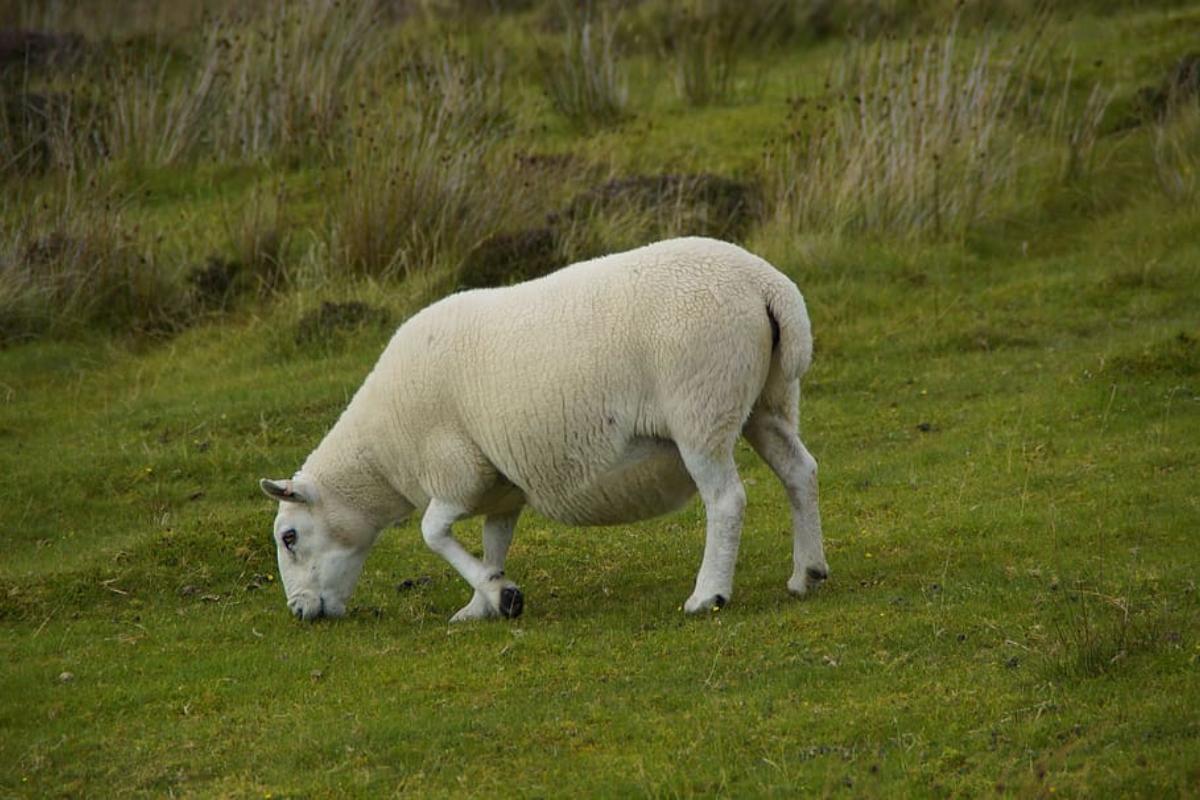How Do Sheep Reproduce?


Sheep are a type of domestic animal that have been bred and raised by humans for thousands of years. They are prized for their wool, meat, and milk and are found in many regions of the world. There are numerous breeds of sheep, each with their own unique characteristics and traits. One of the most important aspects of sheep farming is reproduction, which plays a crucial role in maintaining the health and productivity of a flock.
In the following AnimalWised article, we will take a closer look at how sheep reproduce, their gestation period and birth.
How do sheep reproduce?
Sheep, like other mammals, reproduce sexually, but there are differences in the reproductive process between domesticated and wild sheep. In domesticated sheep, breeders select a ram with desirable traits and mate it with a group of 25 to 35 ewes.
Sheep can be bred naturally or by artificial insemination, in which sperm are collected and introduced into the reproductive tract of the ewe. Breeders can also use assisted reproductive technologies such as embryo transfer to produce offspring with desired traits.
In wild sheep, on the other hand, natural selection plays a role, with males competing for dominance and the right to mate. Physical traits, such as the size and shape of the horns, can also influence reproductive success.
Male sheep, or rams, reach sexual maturity between 4 and 6 months, while female sheep reach sexual maturity between 6 and 8 months. Rams are fertile year-round, but ewes have seasonal reproductive cycles and are only in heat from fall to mid-winter. These cycles usually last 14 to 20 days, and ewes are fertile for about 30 hours during this time.
During oestrus, the time of sexual receptivity in the ewe's reproductive cycle, ewes emit a specific odor in their urine that signals to rams that they are ready to mate. Ewes also exhibit behaviors such as approaching rams to signal their readiness to mate. In response, rams become aggressive and may even fight with other males for access to ewes.
During mating, the ram mounts the ewe from behind and ejaculates his semen into the ewe's vagina. The sperm then travels through the cervix into the uterus where it can fertilize an egg, if one is present.
How can you tell if a sheep is pregnant?
Determining whether a sheep is pregnant can be difficult because physical changes are not apparent until pregnancy has progressed. Therefore, consulting a professional in this field is essential. A veterinarian can use several methods to confirm pregnancy in sheep.
One reliable method is blood tests, which can be performed in the early stages of pregnancy and are very effective. These tests detect pregnancy-specific hormones, such as progesterone, which increase during pregnancy.
Palpation of the abdomen is another method of detecting pregnancy, but should not be performed by an expert until after the 70th day of pregnancy, as it can lead to miscarriage if performed incorrectly.
An ultrasound exam can also be used to confirm pregnancy. This non-invasive test uses sound waves to create images of the developing fetus, and can be performed by a veterinarian or experienced farmer.
It is important to monitor the health of pregnant sheep to ensure a successful pregnancy and delivery. A veterinarian can also provide advice on proper nutrition and care of the pregnant ewe to ensure the health of the mother and developing fetus.

What is the gestation period of a sheep?
The gestation period of a sheep is usually about 145 to 155 days, or about 5 months. However, the exact length of gestation may vary slightly, depending on factors such as the breed of sheep and individual differences between animals. It is important to monitor pregnant sheep regularly during pregnancy to ensure proper nutrition and care and to be prepared for the birth of lambs.
Do not miss this other article where we discuss if all sheep have horns.
How do sheep give birth?
As the time of birth approaches, there are definite physical signs that a ewe is about to give birth. One of the most noticeable signs is an enlarged udder that begins to fill with milk, and the vulva may appear red and inflamed. In addition, the sheep may become restless, pawing at the ground and repeatedly lie down and stand up and move around the area in unusual ways. In most cases, the mother separates from the flock.
The onset of labor is typically marked by strong, rhythmic contractions, which will eventually lead to the birth of the lamb. Under normal conditions, contractions last up to 3 hours, but this can vary from ewe to ewe. When a lamb is born, the head and forelegs usually come first, followed by the rest of the body. The ewe typically lies down during birth and may push intermittently until the lamb is fully born.
After the lamb is born, the ewe will continue to have contractions to expel the placenta or afterbirth. This should normally occur within a few hours of birth, but it is important to monitor the ewe closely to ensure that the afterbirth is fully expelled.
As soon as a lamb is born, the mother instinctively begins to lick it to remove the remaining amniotic sac and establish a bond with her offspring. Within a short time after birth, the lamb is able to stand on its own two feet and begin suckling. This first nursing period is crucial for obtaining colostrum, the first milk produced by the mother, which contains essential antibodies that immunize the newborn.
You may also be interested in this other article where we talk about what sheep eat.

How many times a year do sheep give birth?
Sheep are seasonal breeders and usually have one breeding season per year.
The number of births per year depends on the reproductive management of the flock. In traditional extensive systems where sheep mate naturally, the number of births per year is typically one that coincides with the breeding season. However, in intensive production systems where reproductive technologies such as artificial insemination and embryo transfer are used, it is possible to give birth to severallambs per year.
In these systems, ewes can be induced to gestate out of season using hormone treatments, allowing them to breed and lamb at other times of the year. However, it is important to note that multiple lambings per year can be stressful for ewes and may require more intensive management to maintain their health and productivity.
Do not miss this other article where we talk about what is the difference between a goat and a sheep.
If you want to read similar articles to How Do Sheep Reproduce?, we recommend you visit our Facts about the animal kingdom category.
- CEVA. (2021). All about the gestation of sheep and goats . Available at: https://ruminants.ceva.pro/es/gestacion-en-oveja#:~:text=La%20gestaci%C3%B3n%20en%20oveja%20y%20cabra%20dura%20entre%20144%20y, and%20for%20errors%20of%20handling.
- FAO. (s/f). Pregnancy (gestation) of ruminants . Available at: https://www.fao.org/3/T0690S/t0690s06.htm#:~:text=La%20vulva%20se%20inflama%20y%20la%20piel%20est%C3%A1%20suelta.&text= The%20animal%20is%C3%A1%20restless%20and%20doesn't%20eat%20well.&text=About%20d%C3%ADas%20before%20the%20partum%2C%20the%20vulva%20expels%20a%20fluid%20mucous. &text=The%20sheep%20lays%20down%20and,to%20heaven)%20licked%C3%A9by%20her%20lips.
- Reavill, C. (2000). "Ovis aries" (On-line) . Animal Diversity Web. Available at: https://animaldiversity.org/accounts/Ovis_aries/







